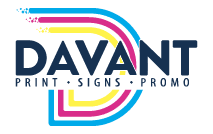Photo Credit: https://unsplash.com/photos/y1efzWi1XYU
When it comes to printing your projects, there are a variety of print finishing options to consider other than the actual printing process itself. In printing, “finishing” refers to value-added operations that are performed after the ink has been applied to the paper, such as binding, cutting or laminating. There’s actually over a dozen different finishing options to choose from to enhance the function and appearance of a finished piece.
Types of Print Finishes
- Binding hold pages together. Whether it’s your booklet, brochures or information packs, binding is a finishing process that includes options such as perfect binding, saddle stitching, spiral/coil binding, and wire-o binding.
- Which Book Binding Method is Best for Your Project?
- Collating documents creates consistency. Collated printing means that the printed material is sorted into a correctly assembled sequence.
- Cutting and Trimming makes your print the perfect size. When printing multiple copies of the same print, its important that everything comes out the perfect size and shape.
- Scoring is the process of making a crease in the paper for easy folding. If you’re folding your printed pieces by hand, scoring helps improve the appearance of your folded martial and can cut your workload in half.
- Folding is mostly used in brochures and flyers, but can be applied on all sorts of printed materials. Folding helps fit large amounts of information into a smaller and more digestible layout. It also helps reduce mailing and distribution costs.
- Laminating is a finishing process that covers your printed material with a durable plastic film. Lamination protects heavily used materials such as restaurant menus, signs, charts, displays, or any type of education or training materials that needs to hold up to everyday use.
- Die-Cutting is unique technique used to grab attention and produces a dimensional effect on your print pieces. You can cut your materials into different shapes, cut out shapes, or outline logos or words with unique cuts.
- Perforating creates lines of very small holes punched into the paper. Think movie tickets for example. Perforation allows parts of the sheet to be separated simply by folding and tearing along the dotted line.
- Rules for your perforated products in printing
- Sequential Numbering involves printing of identification numbers so that each printed unit receives its own unique number. In addition to providing a method for easy reference, sequential numbers provide a high degree of accounting control.
- Spot U-V Coating can be applied to a chosen spot or an entire document to draw attention. Specify the area of coverage, and UV coating gives it glossier effect.
- Aqueous Coating is water-based clear-coat applied to printed pieces to help protect the ink and paper against minor scuffs and abrasions.
- Drilling is a finish technique used to put holes into your pages to use in binders or presentation folders.
- Embossing and De-Bossing creates a 3D texture to a finished piece. Embossing involves flattening the paper creating a raised area and de-bossing, which uses the same technique to create a recessed and indented effect.
- Foil Stamping is the application of a metallic foil design to a printed piece. Foil stamp in gold, silver, or copper for added elegance, or even add raised or indented areas for a unique textural and visual finish.
- Padding allows multiple sheets to be attached with the option of easy removal. Think notepads or sticky notes.
- Shrinkwrapping encloses bundles of printed materials into a clear film. Shrinkwraping allows for easy transportation and added protection.
Do you have any questions about Finishing?
We help you choose the right finishing for your project from the start, and work with you through the finish. Whether you want to talk about an upcoming project, or even grab a cup of coffee, give us a call or shoot us a message. It’s our mission to not just get the job done, but to exceed expectations.
We work with the people, not just the business.

